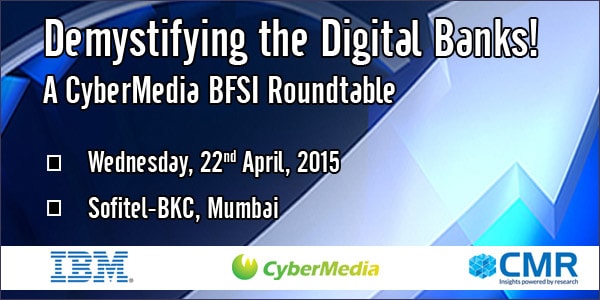|
No trend has impacted the banking sector as much or as quickly as the digital transformation drive. There are different ways to approach digital banking depending on the priorities of the bank. For most banks, there are mainly four mutually reinforcing elements: connectivity, automation, innovation, and decision making. Connectivity refers to how can banks use rapidly growing social networks to build loyalty and competition-disrupting offerings. Automation refers to how to harness digitalization in process re-design for a better customer experience and more effective use of resources. Innovation refers to how banks should continue to renew themselves, given the rapid pace of change in the industry. Decision taking refers to how big data can be used to make better, faster, and more accurate decisions regarding customer purchase choices as well as banks’ decisions on issues such as risk.
In 2015, one can expect more banks to go the digital way. Some of the key areas of engagement apart from the ones highlighted above are:
- Branch optimization: Current branch-based distribution models are no longer sustainable and are unable to meet the rapidly evolving customer needs for real time access and simplicity in banking interactions. In short, banks will begin to figure out how to achieve ‘perceived convenience’ much less expensively than in the past.
- Focus on customer: The new age customer is digitally connected, highly informed and demands a highly personalized approach in his or her communications, products and service. Instead of walking into a local branch office and sitting down to open an account during banking hours, these customers purchase their banking services much like they purchase music, books or other products online, 24/7. The frame of reference for these customers is not other financial institutions, but the best digital retailers and social marketers. When implementing a mobile-first strategy for digital consumers, banks will need to be sure to include the same service fundamentals that were found in branches.
- Breaking down silos: In order to manage customer information more effectively, banks will begin to eliminate both human and data silos by integrating data, systems and processes across different product lines. Data will be shared and leveraged in real-time on all of the bank’s touchpoints, allowing banks to provide more personalized service based on a complete customer profile.
- Simplifying engagement: At a time when everything around is becoming more complex, consumers are searching out those products and companies that can simplify their lives. But it’s important to recognize that simplifying an interaction with customers does not mean that the underlying product or service is simple. Instead, the key is to rethink as opposed to append and look for ways to eliminate steps, paperwork and processes that overly complicate.
- Predictive Banking: Data and analytics are delivering detailed accounts of what customers are doing, have done in the past, and will do in the future. Banks have the potential to offer customers not just the product or loan they need today, but one they might need next year.
|














